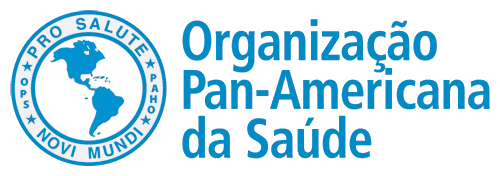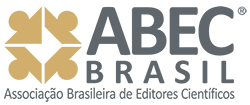0137/2024 - Determinants of urinary pesticide metabolite concentrations in school-aged childrenrural Bogotá. Colombia
Determinantes das concentrações urinárias de metabólitos de pesticidas em crianças em idade escolar da zona rural de Bogotá. Colômbia.
Autor:
• John Alexander Benavides-Piracón - Benavides-Piracón, J. A. - <johnbena1@gmail.com>ORCID: https://orcid.org/0000-0002-7632-0372
Coautor(es):
• David Hernández-Bonilla - Hernández-Bonilla, D. - <davidhdzb@gmail.com>ORCID: https://orcid.org/0000-0003-0539-8495
• José Antonio Menezes-Filho - Menezes-Filho, J. A. - <antomen@ufba.br>
ORCID: https://orcid.org/0000-0002-3191-4484
• Berna van Wendel de Joode - de Joode, B. W. - <berendina.vanwendel.dejoode@una.cr>
ORCID: https://orcid.org/0000-0001-9699-5046
• Diana Angelica Varela-Martínez - Varela-Martínez, D. A. - <davarela@universidadean.edu.co>
ORCID: https://orcid.org/0000-0003-1688-8983
• Diego Alejandro Riaño- Herrera - Riaño- Herrera, D. A. - <dariano@universidadean.edu.co>
ORCID: https://orcid.org/0000-0003-0580-9004
• Thereza Christina Bahia - Bahia, T. C. - <tcuide@yahoo.com.br>
ORCID: https://orcid.org/0000-0003-4787-4103
• Margarita Hidalgo-Mojica - Hidalgo-Mojica, M. - <margaritahidalgo1412@gmail.com>
ORCID: https://orcid.org/0009-0005-8857-2058
• Mónica Alejandra Quintana-Cortés - Quintana-Cortés, M. A. - <maquintanac@unal.edu.co>
ORCID: https://orcid.org/0000-0003-2007-4413
• Nancy Jeanet Molina-Achury - Nancy Jeanet Molina-Achury - <njmolinaa@unal.edu.co>
ORCID: https://orcid org/0000-0002-1912-4893
• Christian H. Lind - Lind, C. H. - <christian.lindh@med.lu.se>
ORCID: https://orcid.org/0000-0001-7435-9890
• Iris Andrea Moya Muñoz - Muñoz, I. A. M. - <iamoyam@gmail.com>
ORCID: https://orcid.org/0000-0002-6848-6372
Resumo:
Quantifying urine pesticide biomarkers is essential for assessing recent exposures due to their short biological half-lives. This study aimed to determine urine pesticide metabolite concentrations using liquid chromatography and investigate associated exposure factors in a rural area of Bogotá, Colombia. In 2019, 231 urine samples were collectedchildren aged 7 to 10. Urinary pesticide metabolite concentrations were measured, and a questionnaire was administered to the children\'s mothers to collect exposure-related data. Multiple linear regression with log10-transformed concentrations was utilized to identify factors influencing these concentrations.Thirteen pesticide metabolites were detected in urine samples. The highest concentrations were observed in chlorpyrifos (TCP= 1.48 median IQ (0.57-3.5)) and pyrimethanil (2.73 median IQ (4.56 7.67)). Log-10 transformed metabolites of chlorpyrifos and profenophos were positively associated with maternal pesticide use (? = 0.13, 95% CI 0.04-0.2) and (?: 0.16 95% CI 0.0-0.3), respectively.
In conclusion, this study unveiled widespread exposure to multiple pesticides and determined that pesticide concentrations in urine samples were influenced by both para-occupational and environmental exposure factors among schoolchildren.
Palavras-chave:
Pesticide, Biomarkers, school-aged children, rural area, Exposure.Abstract:
A medição de biomarcadores de pesticidas na urina é fundamental para avaliar exposições recentes devido à sua curta vida biológica. Este estudo procurou determinar os níveis de metabólitos de pesticidas na urina por cromatografia líquida e examinar os fatores de exposição associados em uma área rural de Bogotá, Colômbia. Em 2019, 231 amostras de urina foram coletadas de crianças com idades entre 7 e 10 anos. Os níveis de metabólitos de pesticidas na urina foram medidos, e um questionário foi aplicado às mães para coletar dados de exposição. A regressão linear múltipla com concentrações transformadas em log-10 foi usada para identificar os fatores que influenciam essas concentrações.Treze metabólitos de pesticidas foram detectados em amostras de urina. As concentrações mais altas foram observadas em clorpirifós (TCP= 1,48 mediana IQ (0,57-3,5)) e pirimetanil (2,73 mediana IQ (4,56-7,67)). Os metabólitos transformados em log-10 de clorpirifós e profenofós foram positivamente associados ao uso materno de pesticidas (β = 0,13, 95% CI 0,04-0,2) e (β: 0,16 95% CI 0,0-0,3), respectivamente.
O estudo revelou uma exposição generalizada a vários pesticidas entre crianças em idade escolar, e que as concentrações urinárias desses pesticidas foram afetadas por fatores ocupacionais e ambientais.













